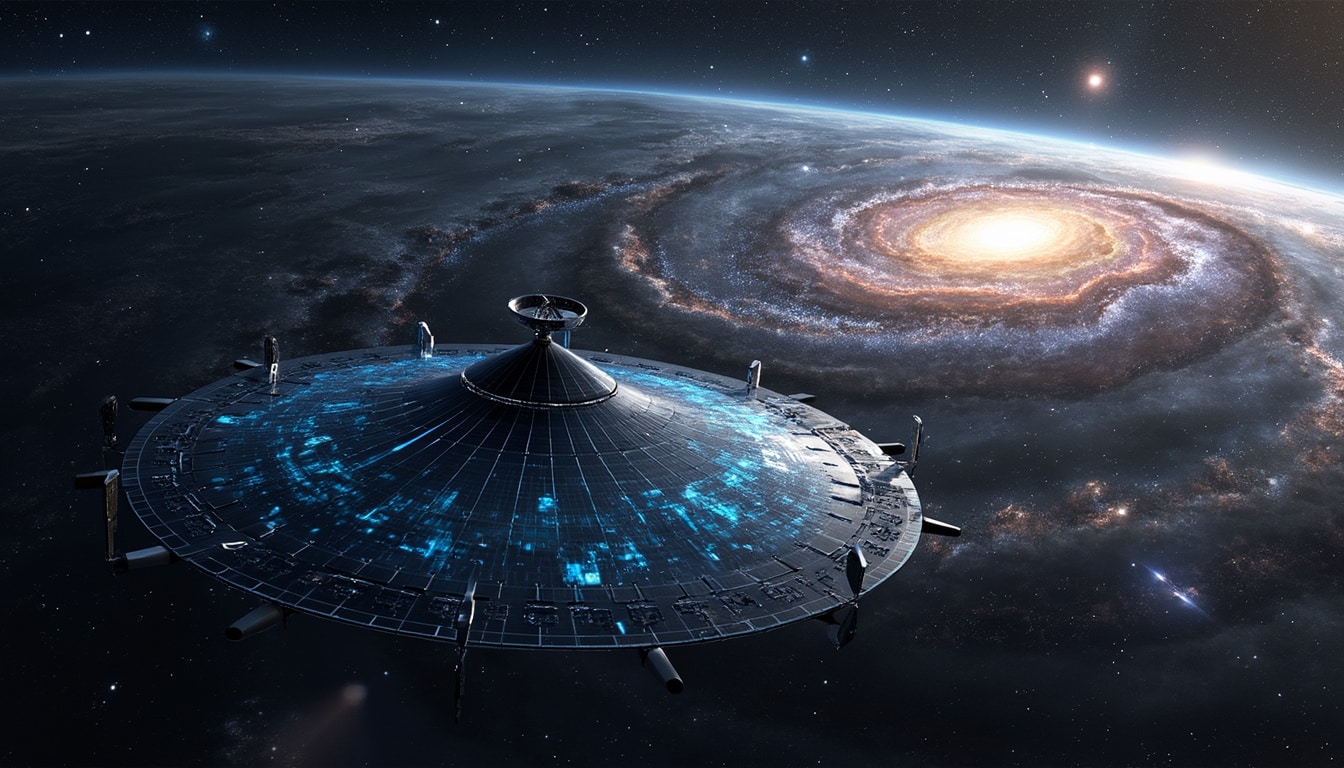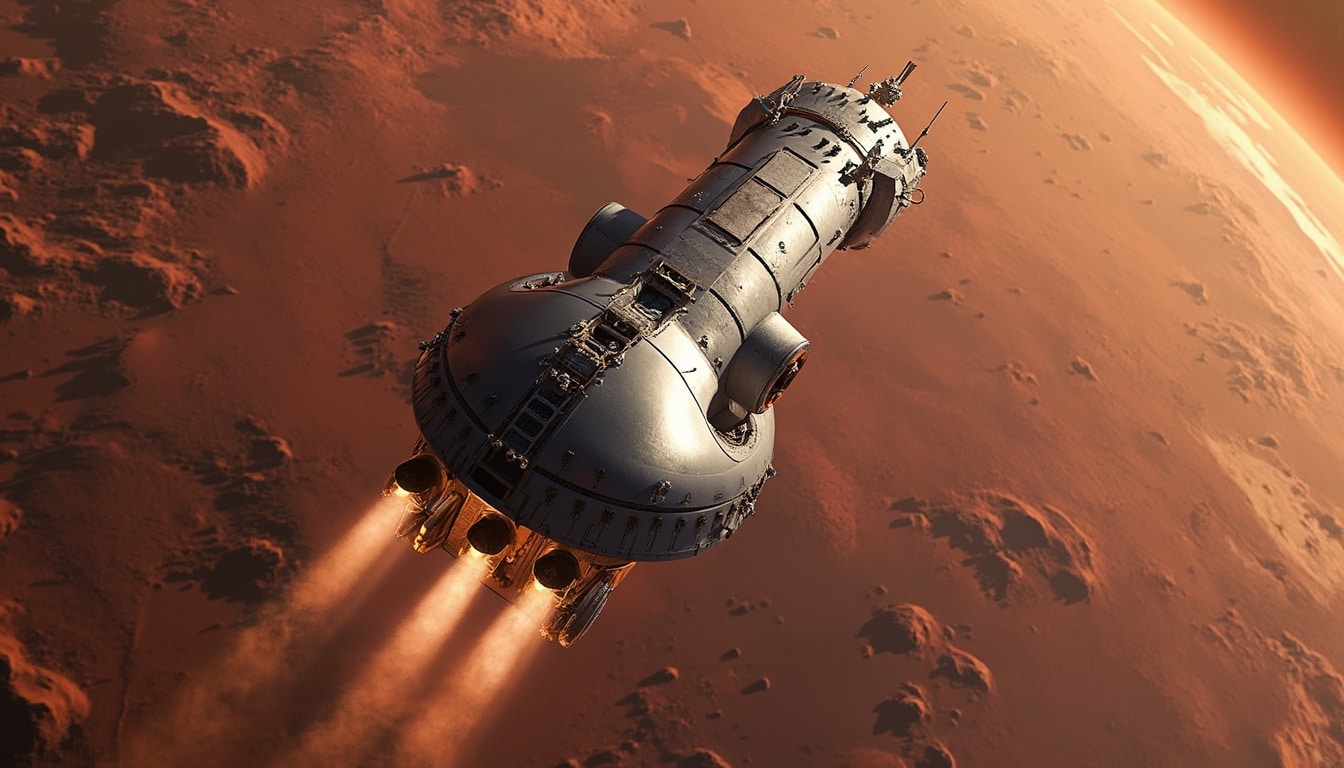The Nancy Grace Roman Space Telescope is on the verge of becoming a groundbreaking instrument in astronomy, promising to unravel mysteries of dark energy and identify distant celestial wonders. With a hefty $3.5 billion budget, the telescope is nearing its launch date while also facing significant challenges. The upcoming budget proposal from the Trump administration could jeopardize not only the future of this telescope but also many other vital scientific missions, raising concerns among researchers and space enthusiasts alike.
This moment in time is critical as NASA is poised to launch an observatory that many believe could open new frontiers in our understanding of the universe. As preparations for the launch were underway, leaks from proposed budget cuts indicated a potential cancellation of Roman, which underscores the uncertainty surrounding scientific funding in the current political landscape. A significant wave of anxiety swept through the scientific community as reports emerged about the proposed cuts, with fears that key programs could be axed—leaving a gap in our understanding of the cosmos.
The Roman Space Telescope: A New Dawn for Astronomy
The Nancy Grace Roman Space Telescope represents a pivotal moment for NASA and the field of astrophysics. This remarkable observatory, often dubbed the “Hubble’s successor,” is designed to address some of the universe’s most profound questions. By surveying the vastness of space, it promises to reveal the distribution of dark energy, contribute to the search for potentially habitable exoplanets, and explore cosmic phenomena previously only glimpsed in the vast darkness of space.

Mission Objectives and Capabilities
One of the primary goals of the Roman Space Telescope is to provide insights into dark energy, a force that appears to be hastening the universe’s expansion. The observatory is designed to conduct wide-field imaging surveys, utilizing its advanced infrared capabilities to capture stunning images of galaxies, star clusters, and even distant supernovae. With its 2.4-meter primary mirror and innovative instruments, Roman aims to deliver images of unprecedented quality—potentially 100 times more data than Hubble.
Roman’s scientific objectives include:
- Understanding the growth of cosmic structures and their relationship to dark energy.
- Cataloging millions of distant galaxies to better understand their evolution.
- Searching for exoplanets and characterizing their atmospheres—key elements in the hunt for extraterrestrial life.
- Providing a complementary view alongside other missions such as the James Webb Space Telescope, enhancing our understanding of both the distant past and near-future cosmic events.
The magnitude of Roman’s mission tasks cannot be overstated. The telescope’s wide-field surveys will allow scientists to map the sky and collect data on galactic formation, providing a more comprehensive understanding of our universe’s history.
Political Undercurrents and Budget Concerns
While the scientific community eagerly anticipates the launch of the Roman Space Telescope, troubling reports of budget cuts emerged from the Trump administration. Expressions of confusion and frustration among astrophysicists suggest they cannot fathom the rationale behind canceling a project that many have deemed critical. The telescope is already built and ready for deployment, making the prospect of its cancellation seem even more irrational.
The proposed budget presents significant cuts to NASA’s science division, which supports some of the most important space missions ever created. This includes slashing funding to heliophysics, Earth sciences, and planetary science, effectively damaging ongoing and future missions designed to improve human understanding of weather, climate, and the solar system. In particular, the proposals detail an almost 50 percent cut to the division overseeing essential missions like the James Webb Space Telescope and the Hubble Space Telescope, both of which have significantly shaped our understanding of the universe.
Space policy experts, senators, and other officials have condemned the budget’s implications, calling it “wholly unserious.” The reality remains that Roman’s future may rely heavily on congressional actions, with bipartisan support historically favoring scientific missions. Observers remain hopeful that lawmakers will step in to restore funding levels, but as history has shown, uncertainty looms large within legislative corridors.
NASA’s Other Ambitious Programs at Risk
Alongside the Roman Space Telescope, other vital missions stand on the precipice of cancellation due to the proposed budget cuts being discussed in Congress. Projects such as the DAVINCI mission to Venus and various missions aimed at Mars exploration are facing precarious futures. Each of these missions serves a unique purpose in broadening our perspective on the universe, and the potential for losing them to budget constraints has sent shockwaves through the scientific community.

A Closer Look at Proposed Cuts
With the proposed budget cuts to NASA’s operations, a forecast emerges that details how the agency would have to operate under a reduced funding model. Astrophysical missions would face nearly two-thirds funding reductions, crippling existing exploration efforts. The goal of utilizing space telescopes for expansive surveys and deep-space exploration appears increasingly tenuous.
Among the proposed budget ramifications, here are key points to note:
| Mission | Current Funding ($ millions) | Proposed Cuts (%) |
|---|---|---|
| Roman Space Telescope | 3,500 | 100 |
| DAVINCI Mission | 100 | 50 |
| Mars Sample Return | 300 | 30 |
| Hubble Space Telescope | 1,000 | 65 |
| James Webb Telescope | 9,800 | 10 |
Each of these missions not only furthers our understanding of space but also inspires the next generation of scientists and engineers. The long-term vision of space exploration could be compromised, signaling a disconnect between supportive scientific achievements and the political decisions that govern them.
Future Ramifications: Voices from the Scientific Community
In the wake of budget cuts and uncertain future projects, the voices of astronomers, scientists, and astrophysicists are becoming increasingly resonant. They urge politicians to recognize the essential nature of scientific inquiry, highlighting its role in expanding knowledge, technological advancements, and inspiration for future generations. Without robust funding, there is a real concern that the United States will fall behind in global space exploration initiatives.
NASA, alongside private aerospace companies like SpaceX, Blue Origin, and established contractors such as Lockheed Martin and Boeing, will face increasing competition from international counterparts aiming to dominate the field of space exploration. A thriving space program contributes to economic growth, scientific advancement, and even national security. Thus, scientists are advocating for maintaining the integrity and robustness of NASA’s missions.
Public Engagement: Inspiring Future Generations
Despite the tumultuous political environment, it remains crucial for space agencies like NASA to engage the public and inspire future generations to dream big. By showcasing the potential of telescopes like the Roman Space Telescope, NASA underscores the importance of science, exploration, and discovery.
Educational outreach programs, public exhibits, and partnerships with private companies are key in rallying public support for space initiatives. To foster a culture of innovation and exploration, it is essential to promote positive narratives about space exploration, emphasizing not only the scientific achievements but also the potential for societal growth that comes from investment in these technologies.
Gathering Support for NASA Missions
The stories behind significant space missions captivate audiences, driving home the message of exploration and discovery while solidifying the importance of research funding. Engaging younger audiences can be achieved through modern platforms such as TikTok and Instagram. Initiatives that directly involve students in scientific research have shown tremendous promise in attracting interest in science, technology, engineering, and mathematics (STEM) fields.
The role of social media cannot be understated; outreach initiatives conducted via digital platforms foster a sense of community among scientists and enthusiasts. Interactions through these platforms create enthusiasm, allowing those involved in space exploration to advocate for continued investment in scientific progress.
As the date for the potential launch of the Roman Space Telescope approaches, hope remains alive that its cutting-edge technology will yield remarkable discoveries, sidelined by looming political battles. The tapestry of our universe awaits, with expanding possibilities contingent upon sustained support for NASA’s ambitious initiatives.
Ultimately, the dialogue around NASA’s budget and future missions will illuminate not only the precarious state of scientific research funding but also the drive needed to safeguard pivotal exploration initiatives. With remarkable advancements on the horizon, scientists across the globe look toward a future where curiosity and understanding propel humanity to new heights.




Leave a Reply